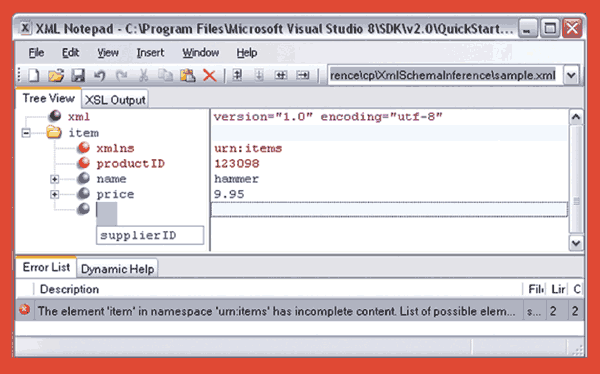

How was this define.xml created? I ask as I have only seen this behaviour when XML files were created starting from Microsoft Office files (which I consider bad practice anyway). So it finds extra (hidden) characters before the real first XML, which then indeed means that it is not conformant with the XML-Schema. You can of course always contact me by e-mail for further details. Leaving them although not used is perfectly valid in XML. It is NEVER necessary to remove unused namespace declarations (such as here the one for "arm").

If it could not find the schema file another error would appear. The only reason that you get this error that I can imagine is that somehow the validator selects a wrong XML-Schema file (it should validate agains "define2-0-0.xsd"). There, using your snippet, I got another error "Missing XML declaration" which is nonsense, as there is no requirement of the XML standard to have an XML-declaration at the beginning of the file (this makes me so sad. I checked your snippet using a Schema-validator and your construct is perfectly OK.Īlso, I could not reproduce your error with P21 3.0.2 Validator. Thank you in advance for any insight you may give me about this.Ĭannot find the declaration of element 'ODM'Īs an XML and XML-Schema specialist I can say immediately that this means that the file does not correctly validate against the XML-Schema. We tried to remove some of the namespaces referred (e.g.: arm) but without success. This is automatically generated by P21, we didn't do any updates. Confirm that 'ODM' is allowed in the Define.xml Standard and has the correct namespace(s)."Ĭurrently the Define.xml ODM tag has the following declaration: As the last step, click Validate now.I've used P21 (3.0.2) to generate a Define.xml based on our specs and immediately after generating it I try to validate it using P21.Įverything goes well except for this error we have "Cannot find the declaration of element 'ODM' using the namespace(s) found on the element. Once you hover XML Tools sub menu, you will see its functions listed. When your XML file is active on Notepad++, go to Plugins menu and find XML Tools sub menu under it. After that, you can open your both XML and XSD files in Notepad++. I assume that you did all the things as mentioned above paragraph.
#Xml notepad validate against xsd install
After you open Plugins Admin, you can search for XML Tools plugin and install it. In Notepad++, go to Plugins menu and find Plugins Admin.
#Xml notepad validate against xsd download
After you download and install it, you need to install XML Tools plugin. If you haven’t Notepad++, please download it from here. These restrictions tells that in the specified column, values can have one of these three values and cannot have any other value.įinally, in order to see our XSD file running, we need to open our both XML and XSD files in Notepad++ and use XML Tools plugin. If a value is in this format like 01–01–2020, then it is wrong. For example in this example, we are saying that we are expecting date values as dd/mm/yyyy format. When we enter a pattern value, then we expect a value as specified in the pattern. If a value is not a string data type, then you will get a message about it.

When we write this type of a restriction, XSD checks whether the related value is string or not. In some lines in above XSD file as you can see, there are these lines which says that there is a restriction about being a string for values. We can have zero record, or we can have unlimited records in our data set. Here we say that EmployeeRow can have zero occurrence as minimum and there is no limit for maximum. In this XSD file, there are important check rules for our XML file.


 0 kommentar(er)
0 kommentar(er)
